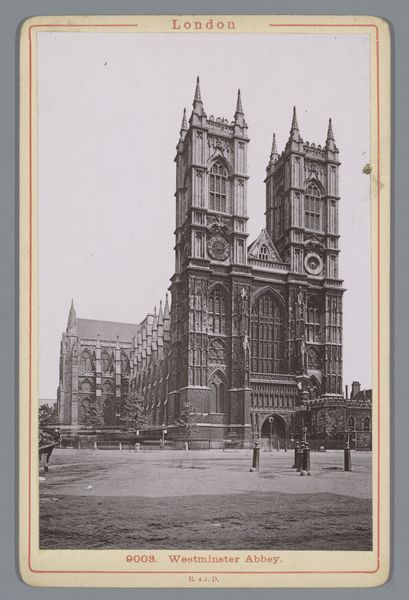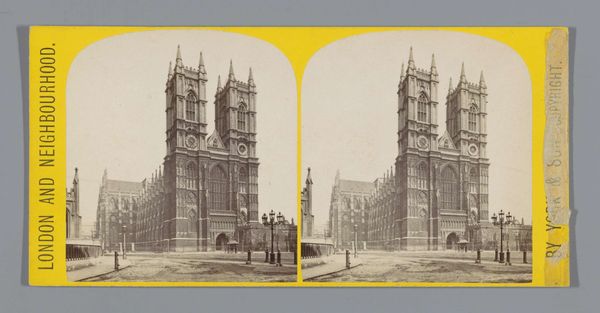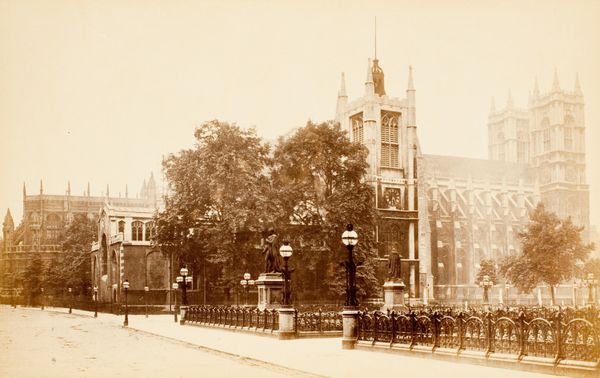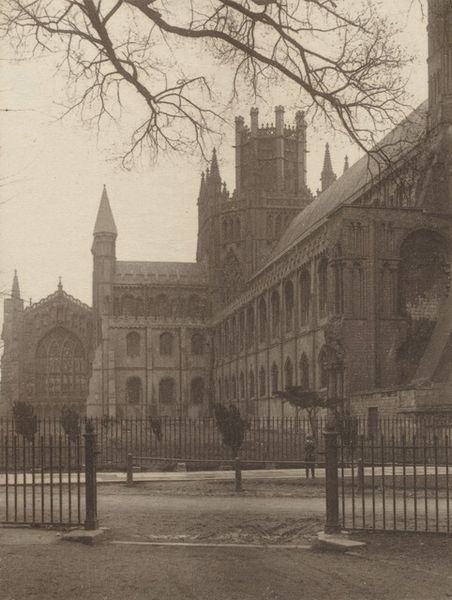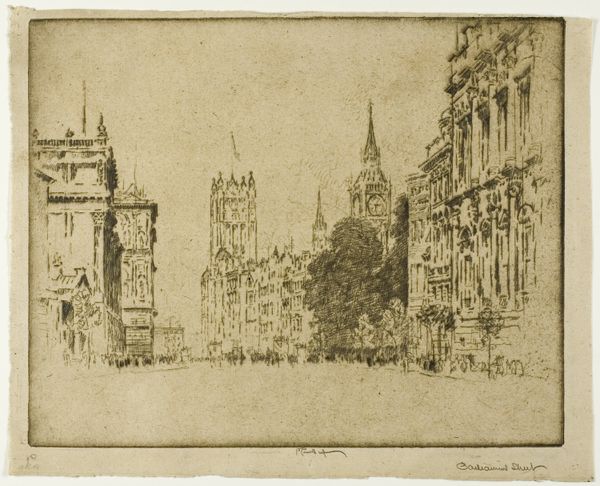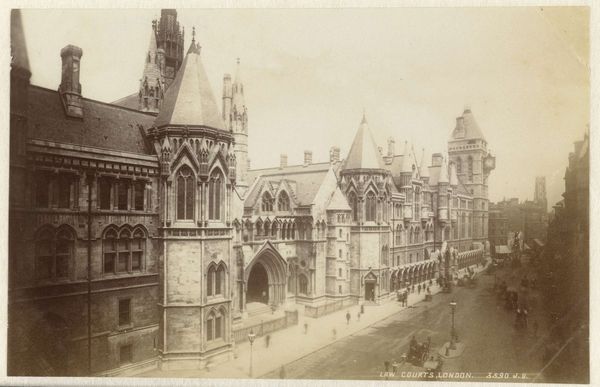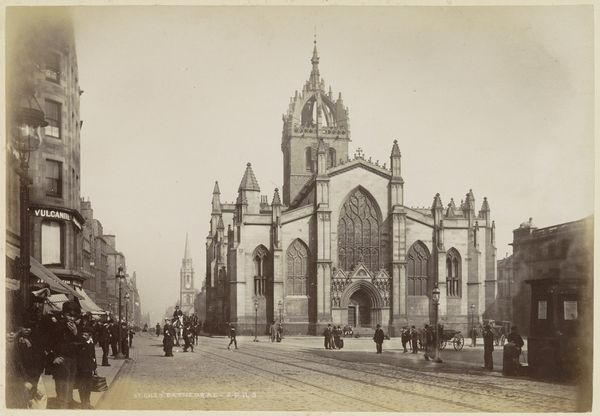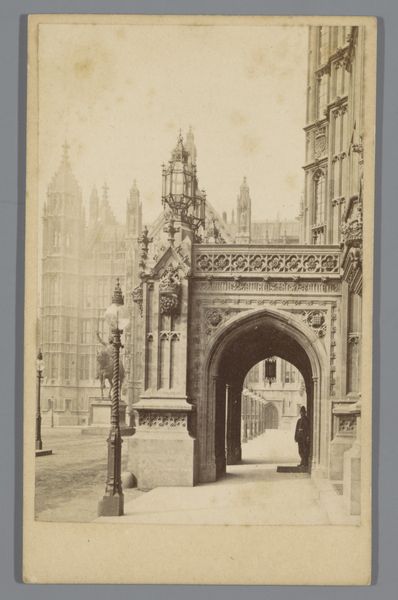
Gezicht op Westminster Abbey vanaf Victoria Street, Londen 1870 - 1888
0:00
0:00
print, photography, gelatin-silver-print
#
print photography
# print
#
landscape
#
street-photography
#
photography
#
old-timey
#
gelatin-silver-print
#
19th century
#
cityscape
Dimensions: height 160 mm, width 215 mm
Copyright: Rijks Museum: Open Domain
Curator: We’re now looking at Samuel E. Poulton’s "View of Westminster Abbey from Victoria Street, London," a gelatin silver print made sometime between 1870 and 1888. It is currently held here at the Rijksmuseum. Editor: The first thing that strikes me is the grand, almost theatrical perspective. The abbey dominates, of course, but the long street amplifies the scene, like a stage set leading up to this architectural crescendo. Curator: Yes, Poulton’s use of linear perspective creates a powerful visual hierarchy, doesn’t it? The photographic texture lends it a specific quality, almost ghostly. Note the contrast between the light stone and the shadows which define the structural grid. Editor: It also evokes a specific era. Imagine the London that produced both smog and high society, an industrial giant struggling with identity and rapid development during that time. We see evidence in this photograph. The empty streets seem…sanitized. Curator: The composition, though, guides our gaze upwards, past the grittiness. The careful tonal arrangement makes us see it formally, divorced from history to some extent. The placement of the towers, almost mirrored… Editor: Perhaps, but context is crucial. The late 19th century was obsessed with documenting progress. Photography served a vital social purpose—evidence. Consider the politics embedded here: a celebration of institutional power viewed through a very controlled, even exclusionary lens. Few common people are shown. Curator: But that controlled composition underscores a careful orchestration of light and shadow. Semiotically, we can examine the formal repetitions of shape, the subtle variations… It suggests a stability in the structures that goes beyond history. The towers represent time. Editor: Fair enough, and maybe there's something more here than urban boosterism, but seeing Westminster Abbey then, almost devoid of human life beyond distant figures, invites us to question who was empowered to depict such iconic landmarks in that way. And what stories got left out of the frame. Curator: Your point is well taken, there is an undeniable social component, yet Poulton was first exploring what a silver print can communicate by itself, aesthetically, almost removed from everything we understand by it socially and culturally. Editor: Ultimately, this work presents us with a striking duality, revealing and obscuring information to inspire consideration of how the past truly looks.
Comments
No comments
Be the first to comment and join the conversation on the ultimate creative platform.


